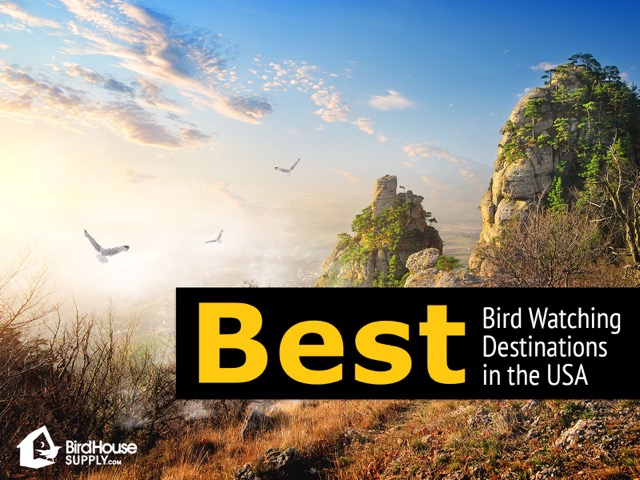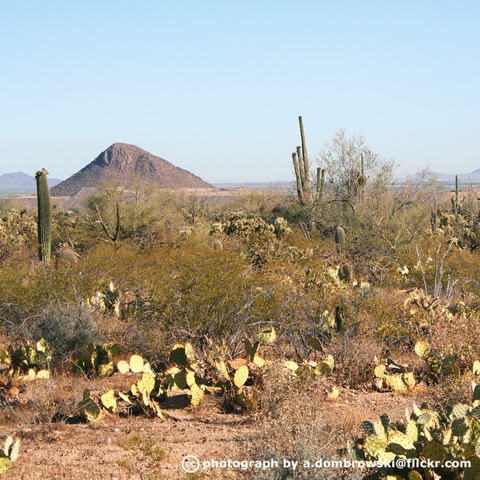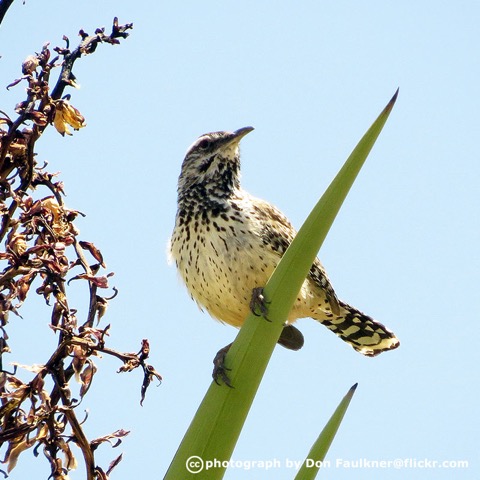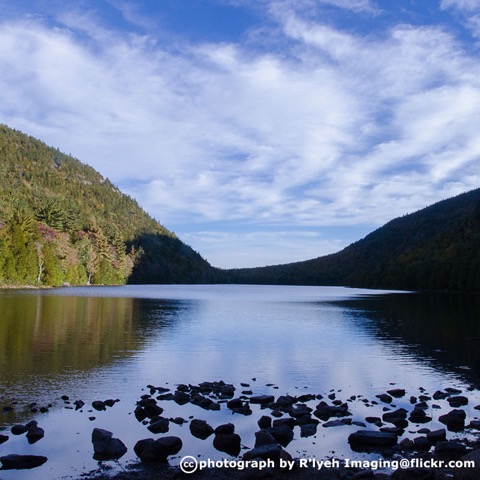For most of the year bird watching means looking out the window and relaxing in the backyard. We set out our mini-ecology support stations and welcome in our feathered neighbors. Everything “cool” is local and our bird feeders, waterers and nesting houses embrace a stunning array of avian species. Being a static birder is the easiest and most relevant way to be a hands-on environmental helper.
A birder is always “on patrol” for ornithological experiences (while pulling weeds in the garden, your author witnessed bald eagles, juvenile and adults, languidly pushing their way towards the west!). And each one is an amazing treat. But, there is nothing quite like travel.
Mark Twain informs us that:
“Travel is fatal to prejudice, bigotry, and narrow-mindedness… Broad, wholesome, charitable views of men and things cannot be acquired by vegetating in one little corner of the earth all one’s lifetime.”
Well, you really can’t argue with that. Fill up those feeders and dust off the suitcase…it’s time to expand the mind and pound the birder trail!
Best Birdwatching Destinations
When choosing birding areas consider geography and climate.
Birds choose the area to be in based on resources, weather and the season that best provides what they need. Weather can bring unexpected visitors such as the pelagic or tropical birds that often pop up after hurricanes.
While many species readily overlap into areas, don’t think of birding as visiting states. Birds don’t! Plan your trip to encompass ranges such as the Florida Panhandle, the Smoky Mountains, Delta wetlands, barrier islands, prairie, migration wetlands or the basin of the Rio Grande. The best birding sites are in every state. There are too many to mention – really. Let’s keep that fact going and continue to expand the resources for wildlife!
Southwest and West
Ahhh, the ruddy swathes of sweeping sandstone the Navajo called home, the overwhelming grandeur of buttes and the pignon pines and iconic saguaro, if you can tear your eyes away from the humbling landscape, you won’t miss out on the birds.
Visit the home of Coyote’s nemesis, Roadrunner, and witness the spectacular silhouettes of golden eagles. If you are planning your trip don’t forget Arizona’s “Southwest Wings” festival.
- Cave Creek Canyon and Saguaro National Park (Arizona): Portal, Arizona is home to Cave Creek Canyon. Embraced by the Chiricahua Mountain range and a stone’s throw from Mexico, the species that flutter here make this a renowned birder’s hotspot. The region caters to birdwatchers and offers a myriad of events and opportunities – including birding resorts. Expert ornithologists lead day trips into the locale – home to over a dozen hummingbird species. Watch for shorebirds and waterfowl at Cochise Lakes. Arizona’s Saguaro National Park is not to be missed! Those imposing cacti call Tucson home and the cactus wrens, warblers, screech owls and woodpeckers literally find saguaro to be their homes! The kestrel, elf owl and martins are sure to answer the “for rent” signs too. Saguaro Park encircles deserts and climbs into rich pine forests. This diverse landscape offers a wonderful opportunity to watch golden eagles, roadrunners and Gambel’s quail. The pines shelter Mexican Jays, ravens, whip-poor-wills and an array of songbirds.
- Bosque del Apache National Wildlife Refuge (New Mexico): Burnished sandstone greets the sunset as flocks of wintering Rocky Mountain Sandhill Cranes and Snow Geese push skywards. Located a few miles from San Antonio (less than 1 ½ hours from Albuquerque) book a trip on one of the Refuge’s wildlife and bird watching tours. Home to the Pueblo and Apache, this region boasts the Rio Grande floodplains, marshes, foothills, forests, mountains (San Pascual, Chupadera) and stunning mesas. Follow the species and season list to find out when your favorites are visiting.
- Santa Ana National Wildlife Refuge (Texas): Stunning near-tropical refuge that has an interactive birdtracker. Visit the park and document your sightings! Waterfowl float under gossamer Spanish moss. The Santa Ana Refuge is a critical habitat hosting unique bird species * and the endangered ocelot. This refuge is a migratory hotspot for birds and birdwatchers.
* Birds: Great Kiskadee, Chachalacas, Green Jay, Cactus Wren, wood-warblers, larks, owls, eagles and so many more!
- High Island, Bolivar Flats (Texas): This is the port of call for species winging north from the tropics and South America. It is the first landing area for birds that have just completed the daunting leg of the Gulf – tired and drained – they have been known to literally drop from the air! After feeding, the birds continue their journey northward to nesting grounds. Expect to marvel at warblers, towhees, buntings, tanagers, orioles and more. Shorebirds find the Bolivar Flats to their liking.
- Houston’s Audubon Shorebird Sanctuary, this wetland stretches forever with marshes, flats, beaches and salt grasses! The rich ecosystem hosts an amazing list of wildlife from Roseate Spoonbills to Wilson’s Plovers. Watch for other species in the skimmer, red knot, tern, godwit, oystercatcher and egret families. Spectacular Yucatan Vireos, flycatchers and Mangrove Cuckoos are worth the trip. Population surveys are critical to understanding and sustaining these environments – join the Bolivar Flats team and submit your counts! (Visit the Shorebird Sanctuary’s Texas Shorebird Survey here (contacts Richard Gibbons, Erik Johnson).
- Point Reyes National Seashore (California): This internationally renowned peninsula is a photographer’s dream. From graceful arms of rocky outcroppings reaching into the Pacific to stone-age Native American archeological sites, bird watchers are going to need time management skills! The Point Reyes National Seashore supports a diverse ecological system that is home to endangered wildlife including the Short-tailed Albatross and the California Clapper Rail. “Today, visitors can discover over 1000 species of plants and animals. Over 45% of North American avian species and nearly 18% of California’s plant species are found in the park due to the variety of habitat and uniqueness of the geology.” Get your binoculars ready to view the Sandhill Cranes, Peregrine Falcons, Marbled Murrelets and Storm Petrels. (Read more about the threatened and endangered species.)
- Monterey Bay (California): Who hasn’t heard of Monterey Bay? This coastal region is home to the conservation centered Monterey Bay Aquarium (they have penguins). Before you go, watch the antics of the stilts and plovers on the Aquarium’s “Live” Aviary Cam! Stop to witness the pelagic species that frequent “Cannery Row,” and the stunning kelp forests. Paddle out to see the famous otters or take a whale watching tour after visiting the Santa Lucia Highlands. The Monterey Bay National Marine Sanctuary is a naturalist’s paradise. The 300-mile stretch of preserved coast is even more spectacular when the condors soar across the cliffs of the Big Sur. This bird-centric region hosts over 480 species of avians from songbirds to shorebirds and raptors to hummingbirds. This is a must-visit and astounding region for bird watchers. Where else can you see a Sooty Shearwater playing near a breaching humpback whale? Orcas, blue whales, falcons, grebes, oystercatchers, Pigeon Guillemots, California Towhees, Yellow-billed Magpie….and much much more.
Northwest
- Fort Stevens State Park (Oregon): Situated a short drive from Astoria, the Fort Stevens State Park offers an array of shore and seabirds. Set up your viewing station on the birdwatching platform! Don’t miss the fall migrations of seabirds – when half a million Sooty Shearwater wing into the tides. The tides are key, funneling the shorebirds in the areas of the South Jetty and down into Trestle Bay.
- Yaquina Head (Oregon): Situated near Newport, this coastal hotspot is the place to view rare species in the nesting season (spring). Witness Brandt’s Cormorant, Pigeon Guillemots, Peregrine Falcon and a mind-spinning array of songbirds. Spend some time on Cobble Beach and set an ear as the waves rattle over the basalt seafloor. Yaquina Head is an ideal birdwatching location for those avian fans with small children, those with mobility issues and for those who are mature and wise – follow the handicapped friendly routes to the tide pools! Called an “Outstanding Natural Area,” watch for the spellbinding effects of the ecology here …as marine mammals stop by to do the same.
- Malheur National Wildlife Refuge (Oregon): 6,000 Sandhill Cranes and over 300,000 ducks and geese can’t be wrong! Explore the far-reaching and largest freshwater marshland (founded in 1908) of the American west coast it stands as host to the majority of the Pacific Flyway’s bird population. The spring and fall nesting and migration periods at the Malheur Refuge provide phenomenal viewing of songbirds, game birds (gallinaceous species) and birds-of-prey. Set your binoculars on: White-faced Ibis, Avocets, Yellow-headed Blackbirds, Caspian Terns, Great White Pelicans, bobolinks, California Quail, Golden and Bald Eagles, Northern Saw-whet Owls…vireos, jays, Ruby-crowned Kinglets, Blackpoll Warblers – and whew! (Download the Malheur Refuge’s species guide.)
- Audubon’s “Great Washington State Birding Trail. Pick your “hotspot” and if Puget Sound or the beautiful Cascades are your idea of an avian field trip, you can’t go wrong. Set into the Pacific Flyway, you will revel in the thousands of shorebirds and marvel at the songbirds. Watch for Bald Eagles, Pileated Woodpeckers and Trumpeter Swans. Washington boasts the best environment for majestic bird-of-prey viewing. You’ll need a guidebook!
Central Flyway Corridor
- Central Flyway: This vast sweep of linked preserves corrals the Mountains and Plains of the Central US – and engulfs 10 states. The Central Flyway was listed in 1948 and its regulatory agencies include Canadian and Alaskan regions. Both Canada and the US work locally, and symbiotically, to further and maintain ecological research. The committees: “one deals with waterfowl, one with migratory shore and upland game birds (e.g., doves, rails, and cranes), and the third deals with migratory nongame bird issues. Each group has meetings each year to share information regarding ongoing research, monitoring, and management issues about migratory game birds.”
The corridor encompasses coastal, central wetlands, mountains and prairie from Alaska to the Gulf. The Audubon Society promotes and maintains the Flyways hotspots while canvassing to increase protected areas (most recently the Galveston Bay and Wyoming sagebrush nesting grounds). Visit the Audubon Central Flyway site to get ideas (waning: steady yourself for some amazing reads) and keep track of current ornithological posts.
Follow the Priority List and learn about the birds pictured. Join their “call to action” and get an idea of what you can do to help the birds AND their habitats.
* Some species: the iconic Greater Sage Grouse and Lesser Prairie Chicken, Mountain Bluebird, Sage Thrasher, Snowy Owl, Trumpeter Swan, American Woodcock, Brant, Grasshopper Sparrow and the Whooping Crane.
Northeast
- Acadia National Park (Maine): Download the Birding List and get ready to be a birding “Mainiac” in the nature state of Maine. The work of Maine game wardens is popularized on the television show, increasing the number of visitors to this New England state. With coasts, farmlands and forests, birders will enjoy a rich selection of avian habitats. Stop off at Acadia National Park and start watching the Bald Eagles, Cooper’s Hawks and loons. Don’t forget the cuckoos, owls, game birds (including New England’s Wild Turkeys and quail), woodpeckers, whip-poor-wills, larks and more. Oops, don’t forget the Black-capped Chickadee – Maine’s State bird!
- National Seashore (Massachusetts): This sweeping stretch of sand dunes, crashing waves and endless views make Massachusett’s National Seashore on Cape Cod sure to trigger any naturalist’s sense of tranquility. As peaceful as it is productive, the dunes are home to nesting shorebirds including terns and sandpipers. The Seashore encompasses 40 miles of salt marsh, freshwater ponds, marsh grasslands, uplands and lighthouses beaconing the birders in!
- Quabbin (Massachusetts): Famous for re-establishing the Bald Eagle to Massachusetts, the Quabbin is a reservoir and natural reservation. In 1982, the Audubon Society teamed up with the state to use the Quabbin as an eagle nesting station. Visit the reservoir and enjoy the loons, Canada Geese, Wild Turkeys, game birds, cardinals, jays, kinglets, wrens, bluebirds, owls, hawks and so many more Northeast species.
Mid-Atlantic
- Cape May (New Jersey): The Cape tosses many naturalists’ passions into one briny soup. Watch the hawk migrations, the rolling flocks of waterfowl and the delightful appearances of songbirds and nesting shore dwellers. In the spring the horseshoe crabs lay their bushels of eggs. Enjoy this ancient spectacle and take note of the diverse pelagic and shore birds that arrive for the feast. Visit the Cape May Bird Observatory, run by the New Jersey Audubon Society (founded in 1897). Schedule your trip to tap into the Observatory resources including classes, workshops, lectures and volunteering opportunities. The Observatory is a working ornithology field research center.
- Jamaica Bay Wildlife Refuge (New York): Across from bustling JFK and the urban “wildlife” of NYC, you can grab your binoculars to watch some theatre at Jamaica Bay Refuge! If you like electric lights and jazzy nightlife you can combine the “Big Apple” with your bird watching yearnings – the best of both worlds. The Bay is a critical stop over for migrating birds. With over 300 species to amuse avian fans, observe Canada Geese, hawks, owls, songbirds and shore birds bee-bopping along the marshes, shoreline, brackish and freshwater ponds, meadows and woods.
- Chesapeake (Maryland and Virginia): Wow. The Old Chesapeake. This is a MUST visit. The stunning estuary is awe-inspiring. It’s a delicate, plucky and fertile 200-mile stretch of bay emerging from the Susquehanna headwaters and drifting into the yawning Atlantic. If you are an eastern bird this is your spot. Start at the Great Dismal Swamp (over 100,000 acres of forest and swamp from Virginia to North Carolina) and trek your way up and east to the coastline to watch songbirds, shorebirds, waterfowl, oysters, crabs and other fauna – in and under the water! The Great Dismal Swamp celebrates “Migratory Bird Day” in May. And April has the Refuge’s Birding Festival.
South
- Okefenokee National Wildlife Refuge (Georgia): Once part of the seabed, the great wetland bog (swamp) of Okefenokee is an avian nursery. The deep peat that supports the bog, wavers and shivers – “land of the trembling earth!” If you can manage to take your eyes away from the black bears, cute turtles and noble alligators you will notice the birdlife. Watch for: Sandhill Crane, Snowy Egret, Anhinga, Brown Pelican, Wood Stork, Red-cockaded Woodpecker…nuthatches, kinglets, sparrows, swallows, thrushes….and one more… waxwings.
- Hilton Pond (South Carolina): This delightful preserve offers events, research and a myriad of nature fun. Join the Ruby-throated Hummingbirds (the Center hosts hummingbird researchers) and their friends on Hilton Pond in York, South Carolina. Enjoy the environments rich fauna including a diverse species of game birds, songbirds, raptors and waterfowl.
- Sanibel Island (Florida): A wading bird watchers paradise – you will be grabbing your camera to capture the elegant egrets, herons, ibis and spoonbills. Sanibel Island regulars set their alarms to be sure to hit Lighthouse Point in the dawn – from fall to spring, migrating species of water and shore birds congregate in the trees for a once-in-a -lifetime sight!
- Everglades National Park (Florida): The Everglades is a huge place. Take your time and plan ahead. Visit the main center to stake out your must-sees. You won’t have to look far to see the birdies. In the fall-spring migratory seasons, start early in the day and be sure to return at dusk to see the owls. Bald Eagles, vultures, spoonbills and storks visit the park. Bring your energy. There are the loons, turkeys, quails, coots, moorhens, hawks, osprey, thrushes, tanagers, woodpeckers, kinglets, buntings, orioles, waxwings, finches, warblers, flycatchers…oh, and the grebes, Whistling Ducks, Snow Geese, teals, plovers, sandpipers….
Overwhelmed yet?
But… we haven’t even pecked at the surface of the bird watching meccas?!
Isn’t that something to crow about!
We never want to be able to list all the wildlife locales – let’s keep growing these ecological settings – we can never have too much wilderness!
In the words of John Muir:
“As long as I live, I’ll hear waterfalls and birds and winds sing. I’ll interpret the rocks, learn the language of flood, storm, and the avalanche. I’ll acquaint myself with the glaciers and wild gardens, and get as near the heart of the world as I can.”





